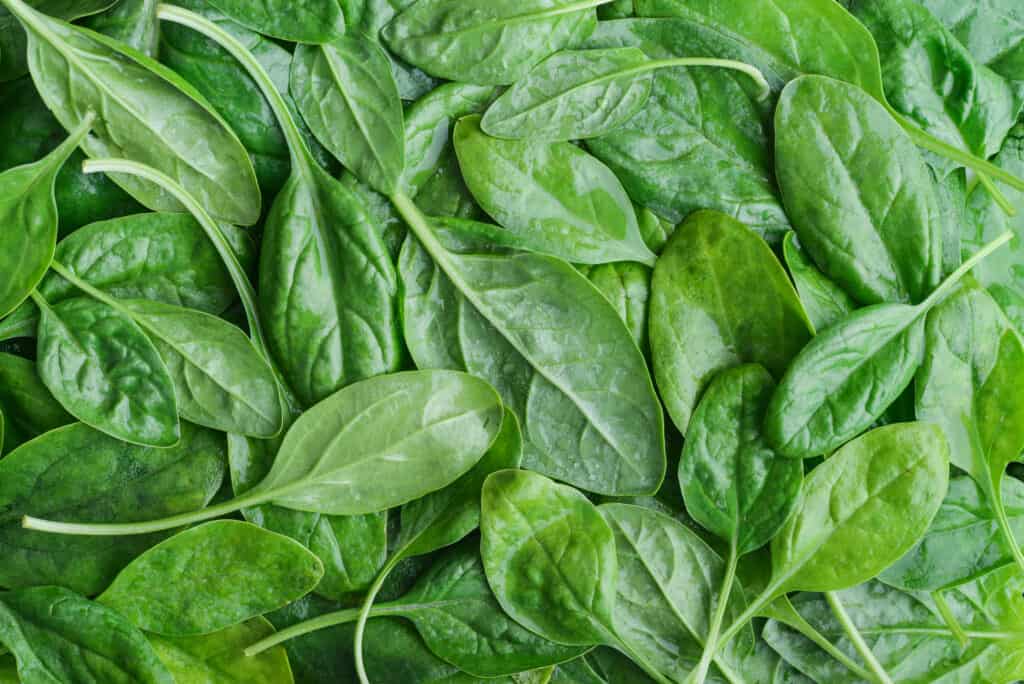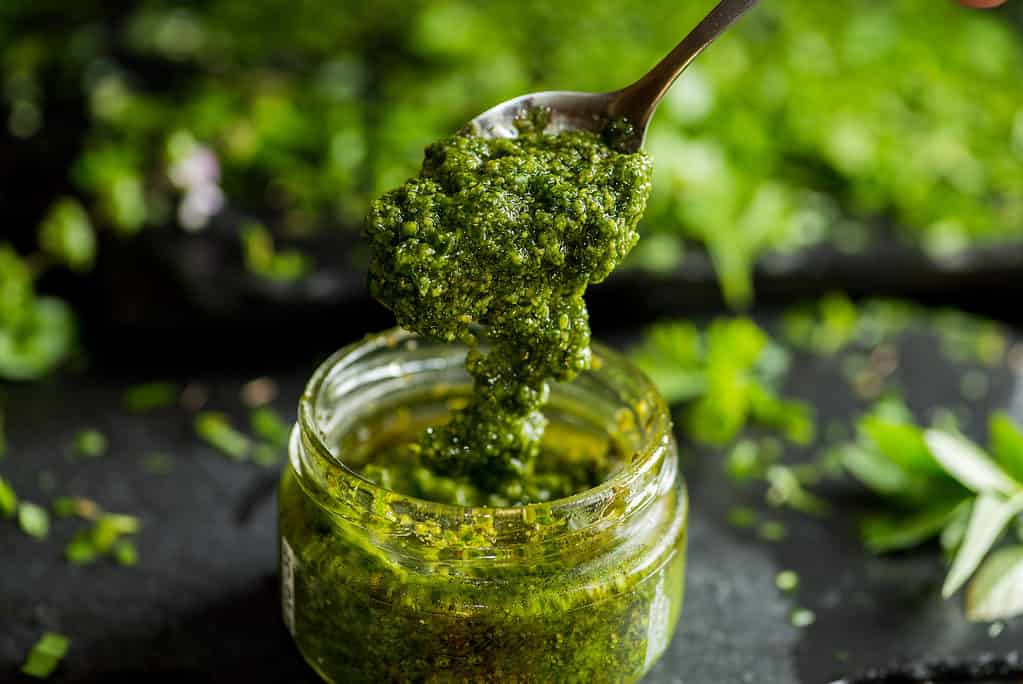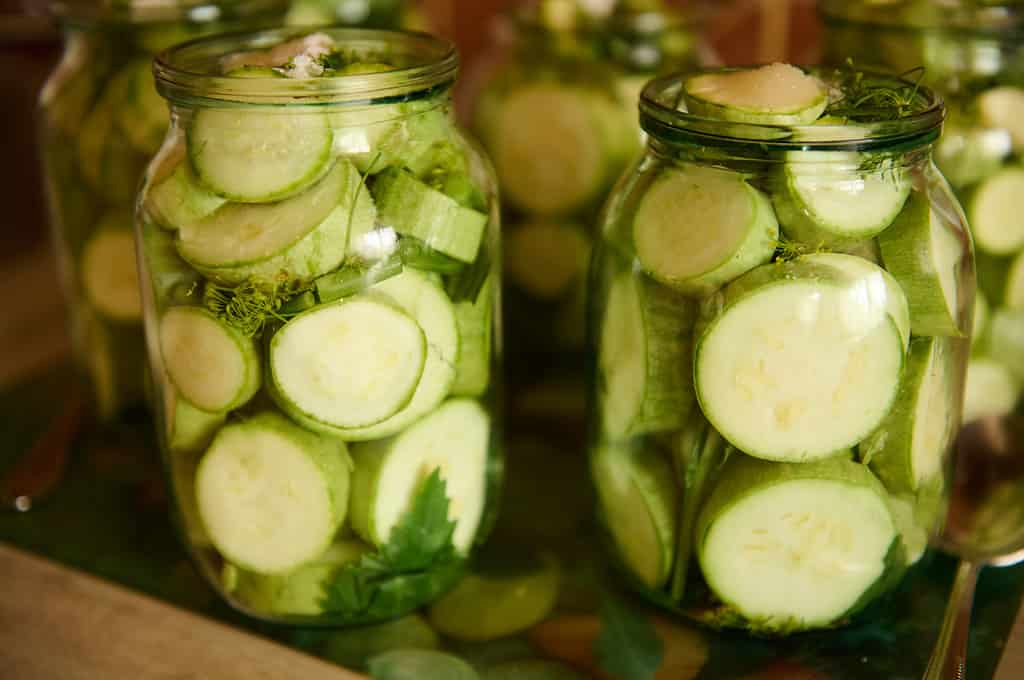Got a bumper crop of spinach? Well, you’re in for a treat! This leafy green isn’t just a salad superstar. From smoothies to savory dishes, there’s a bunch of cool stuff you can do with a big ol’ spinach harvest. So, whether you’re a salad enthusiast, a culinary explorer, or a smoothie fanatic, that spinach haul is your ticket to a world of delicious possibilities. Let’s take a look at some ideas for what to do with your spinach harvest!
1. Enjoy Your Spinach Fresh
When faced with a bountiful spinach harvest, a simple and delicious solution is to enjoy it fresh. Vitamins A, C, and K, along with iron, calcium, and fiber may all be found in plenty in newly picked spinach. Numerous health advantages are associated with eating fresh spinach.
Start your day by adding fresh spinach leaves to your breakfast omelet or scrambled eggs. The mild flavor of spinach complements the eggs and adds a vibrant green color to your plate. For a quick and nutritious lunch, create a refreshing spinach salad. Toss the spinach leaves with your favorite veggies, a protein source like grilled chicken or chickpeas, and a light vinaigrette dressing.
Fresh spinach also works well in sandwiches and wraps. Layer it in a turkey or hummus wrap for an extra burst of nutrients and a satisfying crunch. You can even blend fresh spinach into your smoothies for a nutrient boost without altering the flavor significantly. The natural sweetness of fruits like bananas and berries will mask the taste of spinach while giving you a refreshing beverage.
Incorporating fresh spinach into your dinners is equally easy. Add a handful to pasta dishes just before serving to introduce a pop of color and a nutritious element. Alternatively, sauté spinach with garlic and olive oil as a tasty side dish that complements a variety of main courses.

Fresh spinach has many nutritional benefits.
©iStock.com/tashka2000
2. Cook Your Spinach
If you find yourself with an abundant spinach harvest, there are plenty of creative ways to incorporate it into various dishes through cooking. Freshly harvested spinach is not only versatile but also brings a hearty dose of nutrients to your meals.
Start your culinary adventure by sautéing spinach. Put some spinach leaves, some olive oil, and some chopped garlic in a pan and cook it. To make it, just sauté it until it wilts, add some salt and a squeeze of lemon juice for a sour kick, and serve. This roasted spinach may be used as a tasty topping for grilled chicken or fish, or as a tasty side dish on its own.
Another delightful option is to incorporate spinach into pasta dishes. After cooking your favorite pasta, add chopped spinach to the pot just before draining. The residual heat will wilt the spinach, creating a vibrant and nutritious addition to your pasta. You can also blend spinach into pasta sauces for added nutrients and a beautiful green hue.
For a heartier meal, consider adding spinach to soups and stews. A handful of spinach added in the last few minutes of cooking will brighten up any soup or stew, whether it’s a traditional chicken noodle or a hearty lentil stew.
Spinach may be a tasty addition to baked foods like quiches, frittatas, and casseroles. Mix chopped spinach with eggs, cheese, and your choice of seasonings before baking. The spinach will add both flavor and color to your dish.
3. Freeze Your Harvest
Make sure your spinach is clean and dry before you begin. The leaves should be completely cleaned, free of any dirt or debris, and then dried with a fresh towel. After that, you may blanch the spinach. The leaves are blanched by short boiling them and then putting them in an ice bath to stop the cooking. Although blanching helps maintain color and nutrition, you may omit it if you’d like.
It’s time to separate the spinach for freezing after blanching (or not blanching, whichever you choose). Depending on how you want to utilize it later, you may choose to freeze it in little or big amounts. To avoid freezer burn, seal the parts in freezer bags with as little air as possible.
Label the bags with the amount inside and the date of freezing. You can monitor how long the spinach has been in the freezer in this manner. Remember that frozen spinach is best used within six to 12 months for optimal quality.
When you’re ready to use the frozen spinach, there’s no need to thaw it beforehand. You can directly add the frozen leaves to soups, stews, smoothies, and other cooked dishes. The spinach will quickly thaw and cook in the heat of your recipes.
Freezing your spinach harvest not only extends its shelf life but also ensures you have a convenient source of greens for future meals. Whether you’re aiming to enjoy the benefits of spinach during off-seasons or looking to reduce food waste, freezing is a simple and effective way to make the most of your harvest.
4. Make Pesto, Chutneys, and Sauces
Making a sauce, chutney, or pesto out of a large crop of spinach is a fantastic way to put it to good use. The versatile spices that go into making these condiments will boost the flavor of your favorite dishes and help you make the most of your delicious vegetables.
Pesto, a traditional option, takes little time to prepare. Combine garlic, pine nuts, or almonds that have been roasted in the oven, shredded Parmesan cheese, olive oil, and fresh spinach. You may modify the amounts to suit your tastes. The end product is a brilliant green pesto that may be used as a spaghetti sauce, sandwich spread, or vegetable dip.
Chutney is another option worth exploring. Combine chopped spinach with ingredients like onions, apples, vinegar, sugar, and spices. Simmer the mixture until it thickens, creating a sweet and tangy condiment. Chutney pairs well with grilled meats, cheese platters, or as a topping for crackers.
For a saucy approach, consider making a spinach-based sauce. Sauté onions and garlic, add chopped spinach, and cook until wilted. Blend the mixture with broth or cream for a creamy texture. This sauce can be poured over pasta, used as a base for pizzas, or drizzled on roasted vegetables.

Pesto is easy and quick to make. Plus, it tastes delicious!
©iStock.com/smirart
5. Make Smoothie Cubes
Harness the abundance of your spinach harvest by creating convenient frozen smoothie cubes! This innovative approach allows you to enjoy the nutritional benefits of spinach in a refreshing and time-saving manner.
First, get rid of any grime or contaminants by giving your spinach leaves a good washing. After washing, quickly submerge the leaves in boiling water before transferring them to an ice water bath to stop the cooking process and retain the color and nutrition. After being blanched, the spinach should be drained well.
The next step is to purée the blanched spinach with a little bit of water. Add more or less water to get the desired consistency. For variety and nutritional value, some individuals sometimes add additional fruits to their smoothies, such as bananas or berries.
Now, pour the spinach puree into ice cube trays. This convenient packaging makes it simple to regulate the quantity of spinach used in each smoothie. When the trays are full, put them in the freezer to harden into ice cubes.
Pop a few spinach cubes off of the tray and throw them in the blender with your favorite fruits, yogurt, milk, or juice when you’re ready to prepare a smoothie. Put all the ingredients in a blender and process until smooth.
Frozen spinach smoothie cubes are not only a convenient way to use your harvest but also a time-saving solution for busy mornings. They preserve the freshness and nutrients of spinach while adding a nutritional boost to your daily routine.
6. Try Dehydrating Your Spinach
This method offers a unique way to preserve your leafy greens and extend their usability. Begin by washing the spinach leaves thoroughly and patting them dry with a clean towel. Remove any excess moisture to ensure effective dehydration. Once the spinach has been dried, you have the option of briefly cooking it in boiling water to help preserve its color and nutrients.
Next, lay the spinach leaves out evenly on the dehydrator trays. This will ensure that the leaves dry quickly and evenly. For best results, let the dehydrator run for several hours at a low temperature (about 95 to 125 degrees F). How long it takes to dehydrate spinach depends on its moisture level and the quality of your dehydrator. You’ll know the spinach is ready when it becomes brittle and crumbles easily.
Spinach, after being dried, should be cooled to room temperature before being stored. Dried leaves may be compacted by breaking them into smaller bits. Store the dried spinach in a cold, dark area in airtight containers or resealable bags. Soups, stews, and sauces are just some of the many uses for dried spinach.
Dehydrated spinach may be easily rehydrated by soaking the necessary quantity in water for a few minutes before use. Once the spinach drinks up the liquid, its texture will improve.
7. Make Spinach Chips
Transform your abundant spinach harvest into a crispy and nutritious snack by making spinach chips! This easy and flavorful method lets you enjoy the goodness of spinach in a whole new way.
Start by preheating your oven to around 325 degrees F. While the oven heats up, wash the spinach leaves thoroughly and dry them completely. Removing excess moisture is crucial for achieving that satisfying crunch.
Next, lay the spinach leaves on a baking sheet. Lightly drizzle them with olive oil, ensuring each leaf is coated with a thin, even layer. This helps the leaves crisp up in the oven.
Season the spinach with your choice of spices. Common options include a sprinkle of salt, a dash of garlic powder, or a hint of paprika for added flavor. You can also get creative with your spice blends, tailoring them to your taste preferences.
Place the baking sheet in the preheated oven and let the spinach bake for about 10 to 15 minutes. Keep a close eye on them, as they can turn from crispy to burnt quickly. The leaves should become crisp and delicate, much like potato chips.
Take the baking sheet out of the oven and wait a few minutes for the spinach chips to cool before snacking on them. You can nibble on these chips by themselves, but they’re even better with a healthy dip like hummus or a yogurt-based sauce.
8. Pickle Your Spinach
Make the most of your plentiful spinach harvest by trying your hand at pickling. Pickled spinach offers a tangy and flavorful twist to this leafy green, allowing you to savor its goodness uniquely.
Begin by cleaning the spinach leaves thoroughly and removing any tough stems. Blanch the leaves briefly in boiling water, then transfer them to an ice water bath to preserve their color and texture. Drain the spinach well to remove excess moisture.
Next, prepare your pickling solution. Combine equal parts vinegar and water in a pot and bring it to a boil. You can use various types of vinegar, such as white vinegar, apple cider vinegar, or rice vinegar, depending on your taste preference.
Add spices and flavorings to the pickling solution. Common options include garlic cloves, red pepper flakes, black peppercorns, and mustard seeds. These additions infuse the pickled spinach with a delightful blend of flavors.
Layer the blanched spinach leaves and the chosen spices in clean, sterilized jars. Pour the hot pickling solution over the leaves, ensuring they’re fully submerged. Seal the jars tightly and let them cool to room temperature.
Once cooled, refrigerate the pickled spinach jars for at least 24 hours to allow the flavors to meld. The longer you let them sit, the more intense the flavors will become.
9. Try Your Hand at Canning
This option is in the same vein as pickling, but there are a few differences. Canning preserves the freshness of the spinach and ensures you have a ready supply of this nutritious green on hand.
Start by washing the spinach leaves thoroughly and removing any stems or damaged portions. Blanch the leaves briefly in boiling water and then transfer them to an ice water bath to retain their vibrant color and nutrients. Drain the blanched spinach well.
Get your canning jars ready by sterilizing them in boiling water or the oven after a good cleaning with hot, soapy water. Warm the jars up until it’s time to use them.
Leave just about an inch of headroom at the top of each sterilized jar before packing in the drained spinach leaves. A little salt may be added for taste and preservation purposes.
To cook the spinach, bring a kettle of water to a boil, then pour the water over the spinach in the jars and make sure it covers all of the spinach. Remove any trapped air with a clean tool and readjust the headspace as necessary.
Seal the jars with sterilized lids and rings, following the manufacturer’s instructions. Process the sealed jars in a boiling water bath canner for the recommended time. Your attitude and the volume of the jars will determine the total processing time.
Carefully remove the jars from the canner after the processing time is up and let them cool on a clean cloth or rack. Once the jars have cooled, you’ll hear a pleasant “pop” as the lids have sealed properly.

Vegetable canning is a fun hobby to take on that also yields a ton of benefits.
©Taras Grebinets/ via Getty Images
Summary of Ways to Make Great Use of a Huge Spinach Harvest
| # | Recommendations |
|---|---|
| 1 | Enjoy Your Spinach Fresh |
| 2 | Cook Your Spinach |
| 3 | Freeze Your Harvest |
| 4 | Make Pesto, Chutneys, and Sauces |
| 5 | Make Smoothie Cubes |
| 6 | Try Dehydrating Your Spinach |
| 7 | Make Spinach Chips |
| 8 | Pickle Your Spinach |
| 9 | Try Your Hand at Canning |
The photo featured at the top of this post is © alicja neumiler/Shutterstock.com
Thank you for reading! Have some feedback for us? Contact the AZ Animals editorial team.







